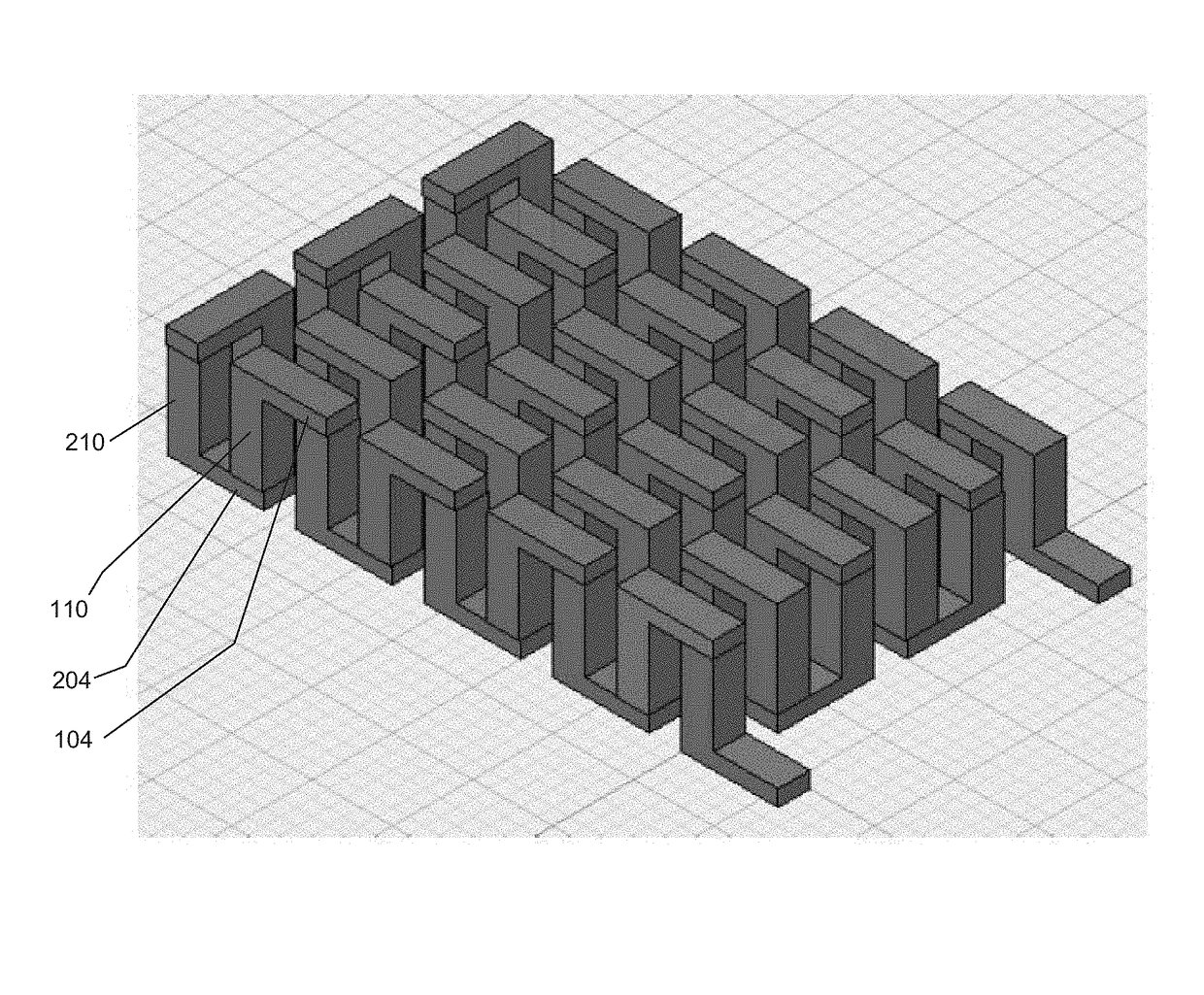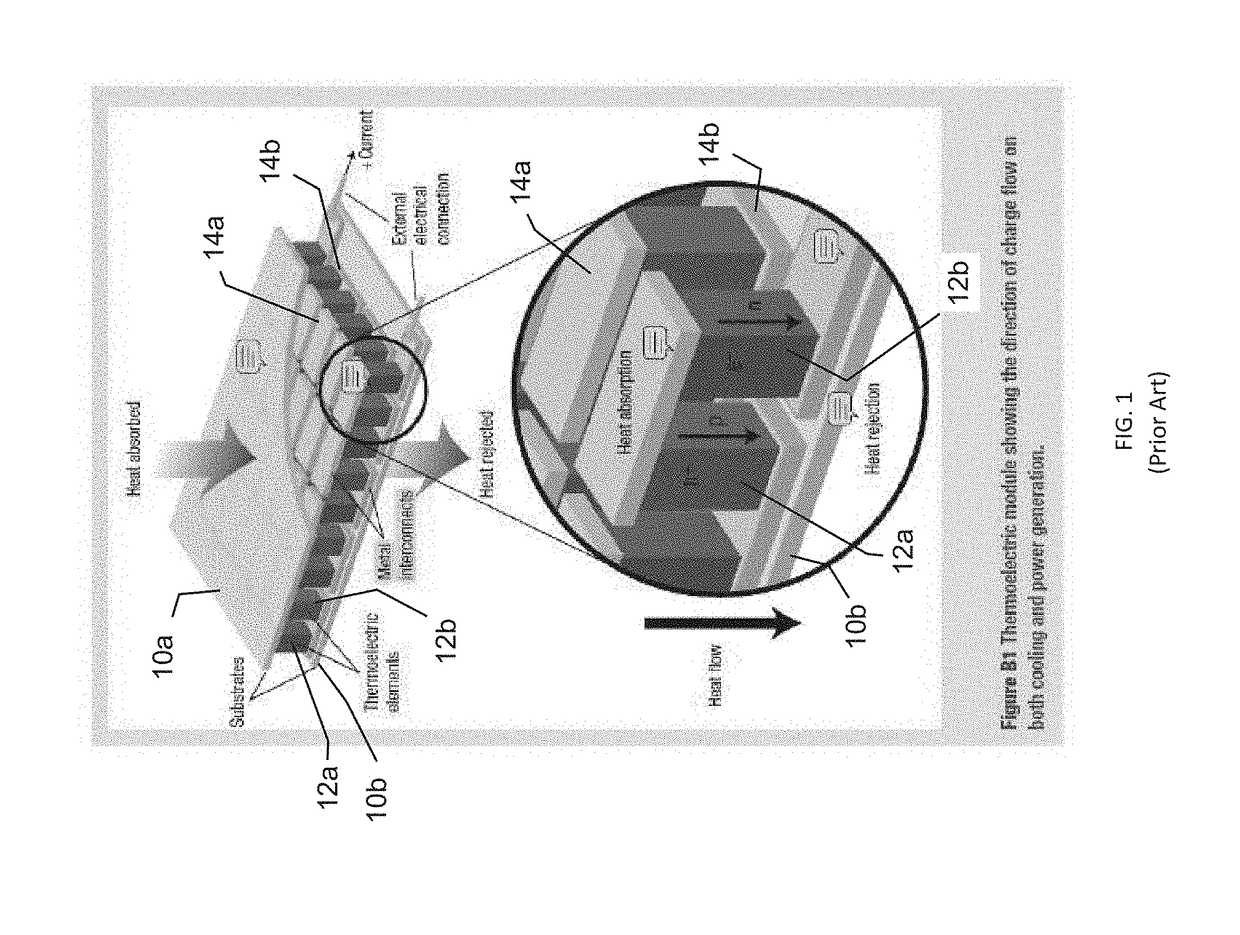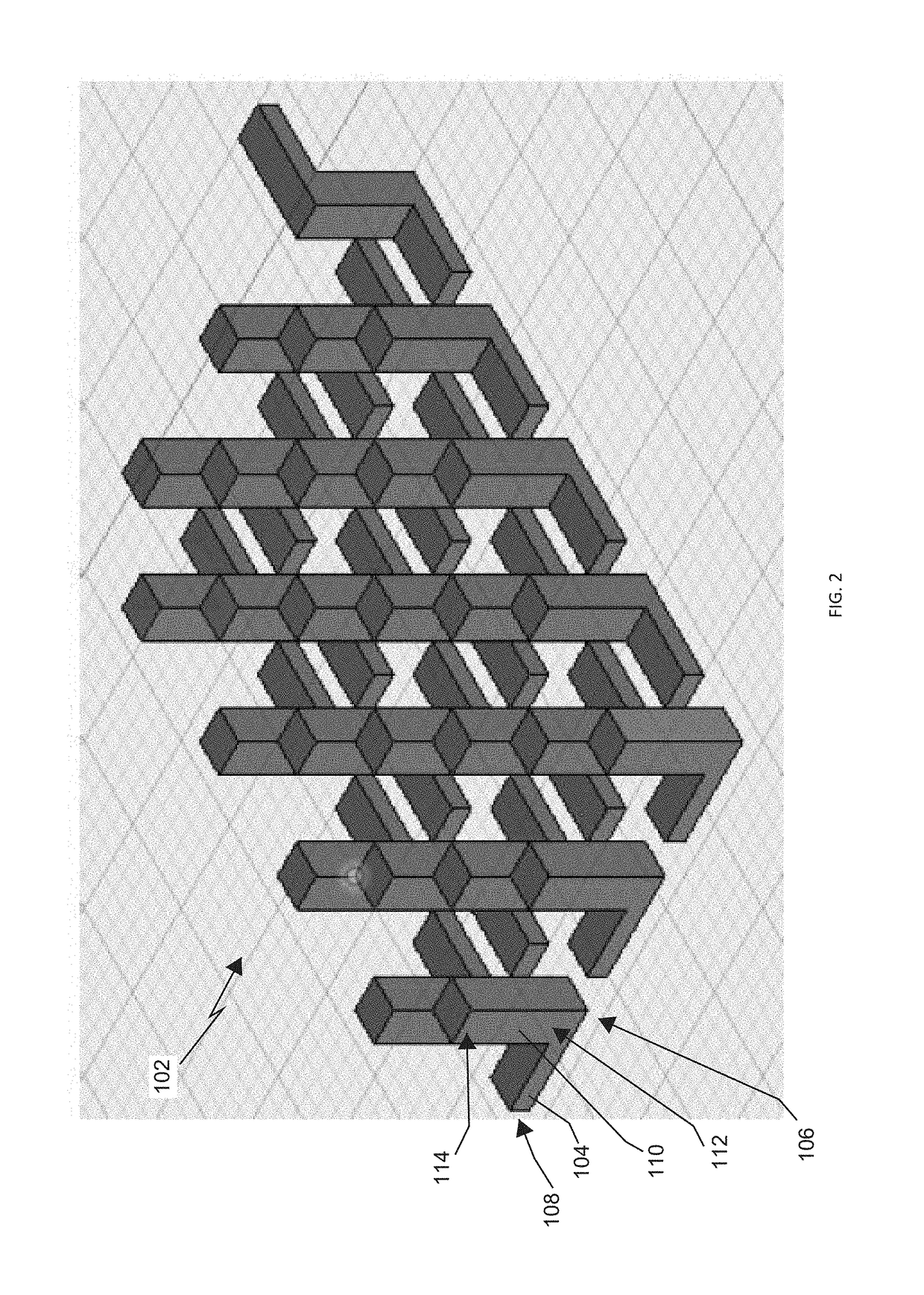Thermoelectric devices
a technology of thermoelectric devices and additive manufacturing, which is applied in the manufacture/treatment of thermoelectric devices, thermoelectric devices with peltier/seeback effects, electrical apparatus, etc., can solve the problems of reducing reliability and reproducibility, and reducing the efficiency of assembling useful devices. , to achieve the effect of lowering manufacturing costs and great manufacturing speeds
- Summary
- Abstract
- Description
- Claims
- Application Information
AI Technical Summary
Benefits of technology
Problems solved by technology
Method used
Image
Examples
example 1
[0041]In one embodiment, a sheet of the non-conducting polyimide Kapton® substrate 100 of the appropriate thickness was affixed to the build plate of a commercial stereolithographic printer (Ember from Autodesk, San Francisco, Calif.). An electrically-conducting photopolymer resin was prepared by mixing together about 65% to about 75% of Photomer 4050 (PEG 200 diactylate, IGM Resins, St. Charles, Ill.), about 15% to about 25% of SR494 from Sartomer Americas (ethoxylated pentaerythritol tetraacrylate, Exton, Pa.), about 2.0 weight % of BAPO (phenylbis(2,4,6-trimethylbenzoyl)phosphine oxide), IGM Resins, Charlotte, N.C.), and about 40 mg of single-walled carbon nanotubes (SWCNT) obtained from OCSiAl (Palo Alto, Calif.), and doped with p-type material to obtain about 50 mL of an electrically-conducting p-type photocurable resin. Preferably, Photomer 4050 is about 73% of the total resin. The resin was dispersed by power sonication with a Branson (Danbury, Conn.) Digital Sonifier model 2...
example 2
[0044]In another embodiment, a prototype thermoelectric generator was fabricated by first preparing an electrically non-conducting acrylate resin by mixing together about 65% to about 75% of Photomer 4050 (PEG 200 diacrylate, IGM Resins, St. Charles, Ill.), about 15% to about 25% of SR494 from Sartomer Americas (ethoxylated pentaerythritol tetraacrylate, Exton, Pa.), about 2.0 weight % of BAPO (phenylbis(2,4,6-trimethylbenzoyl)phosphine oxide), IGM Resins, Charlotte, N.C.), and agitated for 24 hours using a magnetic stirrer to obtain about 50 mL of resin. Preferably, the Photomer is about 73% of the total resin. The non-conducting substrate layer 100 of an arbitrary size was printed onto the build plate of a commercial stereolithographic printer (Ember from Autodesk, San Francisco, Calif.). An electrically-conducting photopolymer resin was prepared by mixing together about 65% to about 75% of Photomer 4050 (PEG 200 diacrylate, KAI Resins, St. Charles, Ill.), about 15% to about 25% o...
example 3
[0046]In another embodiment, a prototype thermoelectric generator was fabricated by first preparing an electrically non-conducting photopolymer resin by mixing together about 65% to about 75% of Photomer 4050 (PEG 200 diacrylate, IGM Resins, St. Charles, Ill.) about 15% to about 25% of SR494 from Sartomer Americas (ethoxylated pentaerythritol tetraacrylate, Exton, Pa.), about 2.0 weight % of BAPO (phenylbis(2,4,6-trimethylbenzoyl)phosphine oxide), IGM Resins, Charlotte, N.C.), and agitated for 24 hours using a magnetic stirrer to obtain about 50 mL of resin. Preferably, the Photomer was about 73% of the total resin. The non-conducting substrate layer 100 of an arbitrary size was printed onto the build plate of a commercial stereolithographic printer (Ember from Autodesk, San Francisco, Calif.). An electrically-conducting photopolymer resin was prepared by mixing together about 65% to about 75% of Photomer 4050 (PEG 200 diacrylate, IGM Resins, St. Charles, Ill.), about 15% to about 2...
PUM
 Login to View More
Login to View More Abstract
Description
Claims
Application Information
 Login to View More
Login to View More - R&D
- Intellectual Property
- Life Sciences
- Materials
- Tech Scout
- Unparalleled Data Quality
- Higher Quality Content
- 60% Fewer Hallucinations
Browse by: Latest US Patents, China's latest patents, Technical Efficacy Thesaurus, Application Domain, Technology Topic, Popular Technical Reports.
© 2025 PatSnap. All rights reserved.Legal|Privacy policy|Modern Slavery Act Transparency Statement|Sitemap|About US| Contact US: help@patsnap.com



